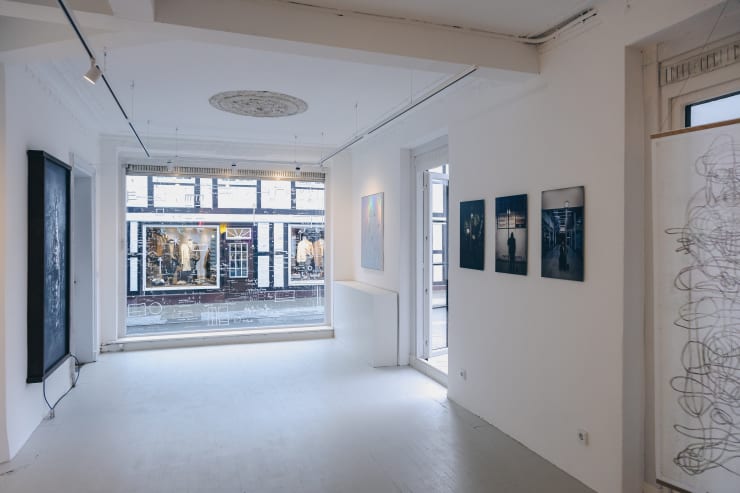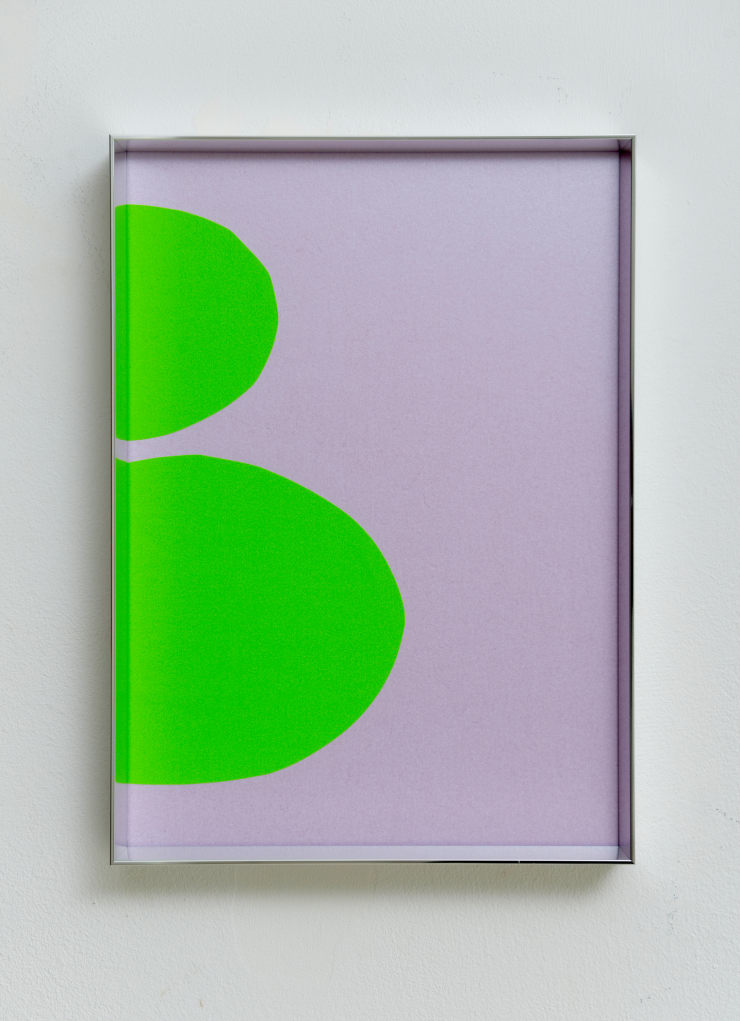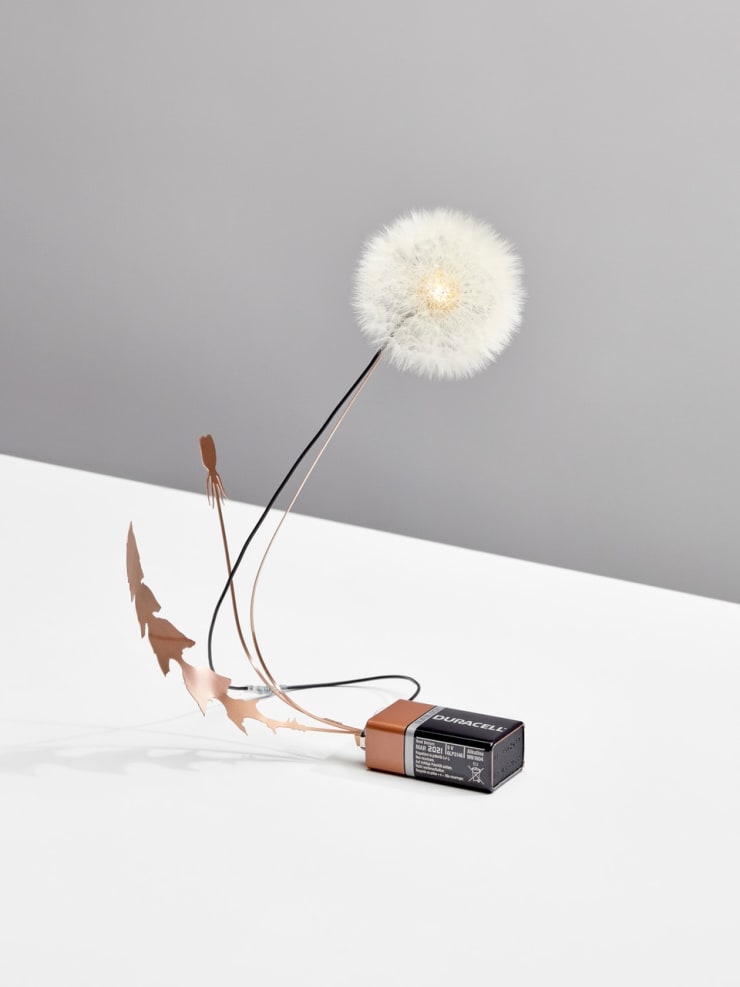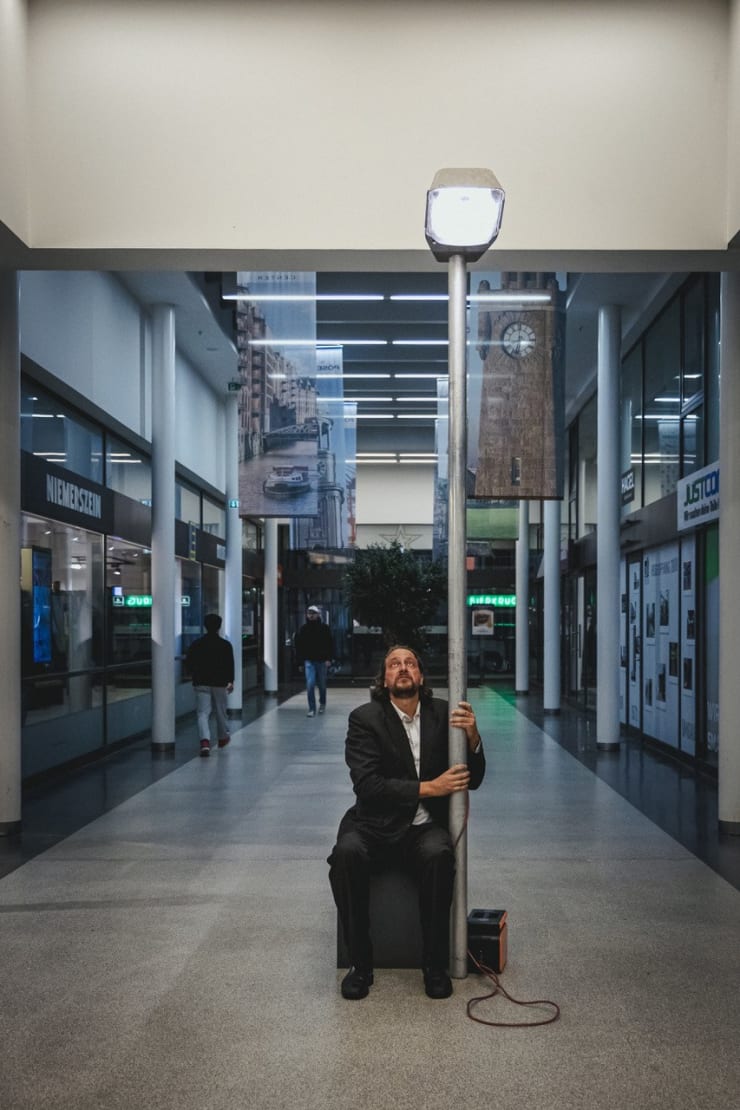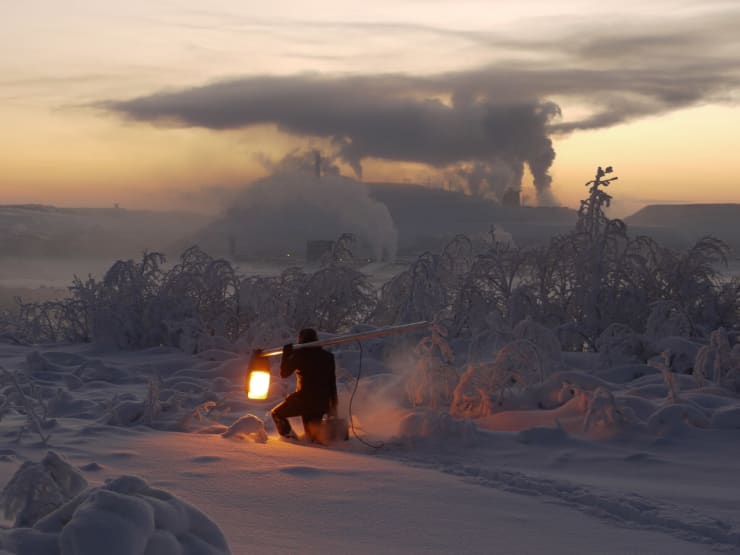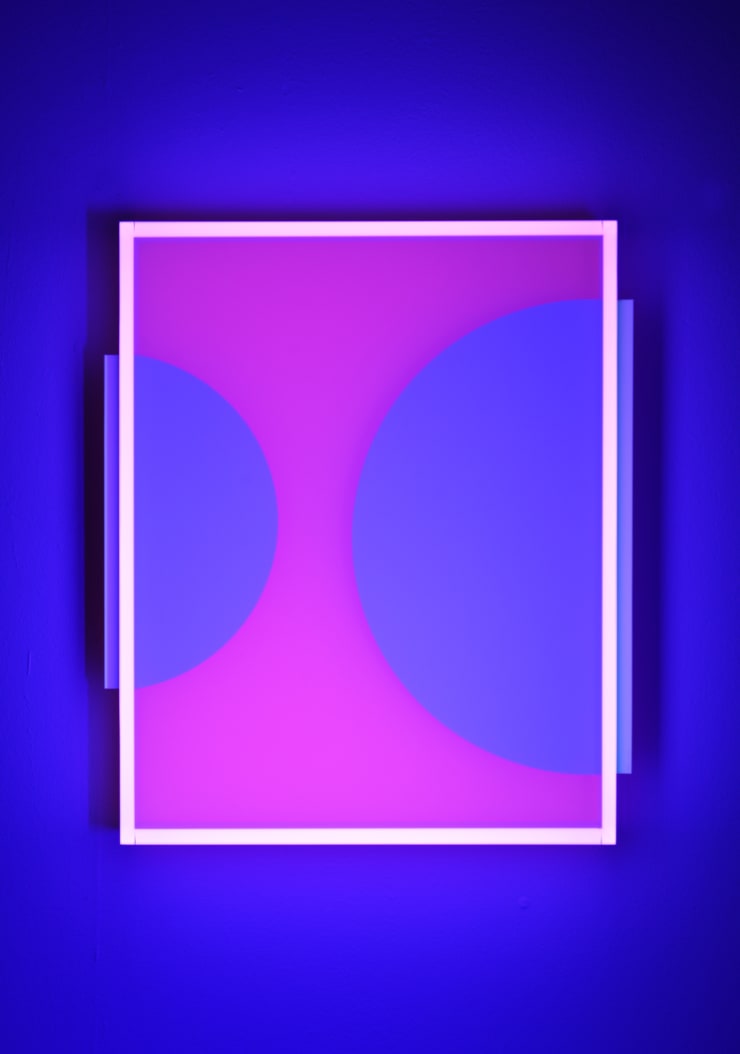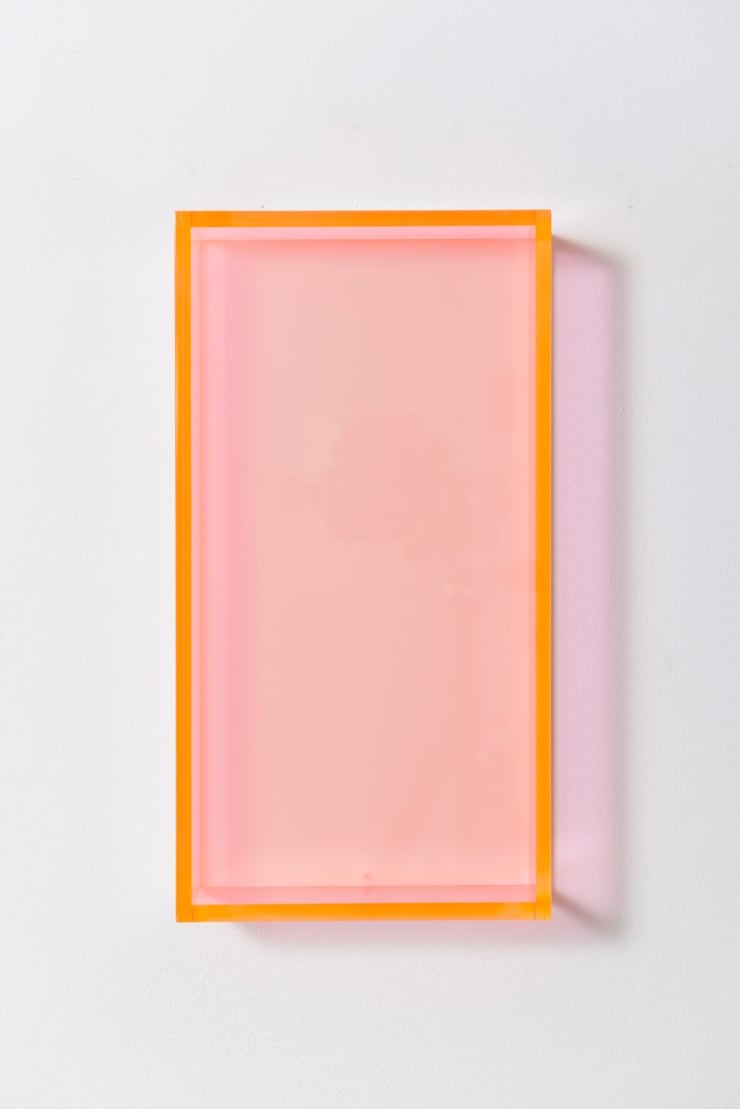λ1 — Natur & Technik: Group Exhibition
Nature and technology: complementary components
Technology and nature are in a constant state of tension: the more radically technology picks up speed, the more visibly nature suffers. It is as if both are competing for the same resources. This state of affairs is reflected in the dichotomy of different pairs: the natural sciences and the humanities, reason and emotion, the creative and logical hemispheres of the brain. This pair has always been considered incompatible. But this was not always the case.
The ancient Greek term téchne (ancient Greek τέχνη) probably originates - as far as can be reconstructed - from pre-Socratic antiquity and originally referred to manual dexterity; the ability to translate theoretical knowledge into practical action. Or also: to translate virtual theory into a natural reality.
Since industrialisation in particular, technology has lost its role as a medium for translation and has increasingly become a metaphor for man-made destruction and displacement of nature - this image reached a cinematographic climax with the 1982 experimental film "Koyaanisqatsi" directed by Godfrey Reggio.
Technology - at least according to the Aristotelian idea - should build a bridge between the manual framework of action and the transcending experiential value of an activity, a science or a work. It has become a buzzword of innovation-obsessed start-ups and a synonym for an out-of-touch view of the world. Where can technology and nature come together again? In art, of course.
Art has always described the transcendent, which defies rational attempts at explanation. It raises a question of faith, a spiritual dilemma that takes the viewer into a world beyond the tangible. A world that can be defined down to the quantum and at the same time defies the most complex equations and can be experienced by the senses.
At Galerie Watson, this fusion finds a preliminary form in the first dedicated group exhibition "Nature and Technology". Ten international artists, including Dori Deng, Monika Grzymala, Tom Jacobi, Regine Schumann, Keith Sonnier, DRIFT, Jacqueline Hen, Marlies von Soden, Protey Temen and Jan Philip Scheibe, explore the aesthetic and social interfaces between these two worlds.
There is no contradiction between nature and technology, between art and science. Only language separates the rationally describable and the irrationally tangible. Or as Victor Franz Hess, the first Austrian Nobel Prize winner for experimental physics, said: "Anyone who believes that there is a contradiction between the natural sciences and religion does not understand the natural sciences."
-

Tom Jacobi - Gran Abuelo, 2023
Foto: David Reineke
-
 Exhibition view "λ1 — Natur & Technik" | Galerie Watson, Hamburg | Photo: David Reineke
Exhibition view "λ1 — Natur & Technik" | Galerie Watson, Hamburg | Photo: David Reineke -
 Exhibition view "λ1 — Natur & Technik" | Galerie Watson, Hamburg | Photo: David Reineke
Exhibition view "λ1 — Natur & Technik" | Galerie Watson, Hamburg | Photo: David Reineke -
 Exhibition view "λ1 — Natur & Technik" | Galerie Watson, Hamburg | Photo: David Reineke
Exhibition view "λ1 — Natur & Technik" | Galerie Watson, Hamburg | Photo: David Reineke -
 Exhibition view "λ1 — Natur & Technik" | Galerie Watson, Hamburg | Photo: David Reineke
Exhibition view "λ1 — Natur & Technik" | Galerie Watson, Hamburg | Photo: David Reineke -
 Exhibition view "λ1 — Natur & Technik" | Galerie Watson, Hamburg | Photo: David Reineke
Exhibition view "λ1 — Natur & Technik" | Galerie Watson, Hamburg | Photo: David Reineke -
 Exhibition view "λ1 — Natur & Technik" | Galerie Watson, Hamburg | Photo: David Reineke
Exhibition view "λ1 — Natur & Technik" | Galerie Watson, Hamburg | Photo: David Reineke -
 Exhibition view "λ1 — Natur & Technik" | Galerie Watson, Hamburg | Photo: David Reineke
Exhibition view "λ1 — Natur & Technik" | Galerie Watson, Hamburg | Photo: David Reineke -
 Exhibition view "λ1 — Natur & Technik" | Galerie Watson, Hamburg | Photo: David Reineke
Exhibition view "λ1 — Natur & Technik" | Galerie Watson, Hamburg | Photo: David Reineke
-
 Dori Deng, Expansion Series, Work No.18, 2023
Dori Deng, Expansion Series, Work No.18, 2023 -
 Jacqueline Hen, H1.6, 2023
Jacqueline Hen, H1.6, 2023 -
 Regine Schumann, colormirror soft pink milled lines 01, 2021
Regine Schumann, colormirror soft pink milled lines 01, 2021 -
 Regine Schumann, fluo cut #45, 2021
Regine Schumann, fluo cut #45, 2021 -
 Regine Schumann, fluo cut #51, 2021
Regine Schumann, fluo cut #51, 2021 -
 Regine Schumann, fluo cut #79, 2022
Regine Schumann, fluo cut #79, 2022 -
 Marlies von Soden, Negligé Illuminé, 2016
Marlies von Soden, Negligé Illuminé, 2016 -
 Marlies von Soden, OPUS 48 No. 4, 2023
Marlies von Soden, OPUS 48 No. 4, 2023 -
 Protey Temen, Relative Explanations (on Window), 2023
Protey Temen, Relative Explanations (on Window), 2023 -
 DRIFT, Dandelight, 2023
DRIFT, Dandelight, 2023 -
 DRIFT, Dandelight, 2023
DRIFT, Dandelight, 2023 -
 Jacqueline Hen, H2.6, 2023
Jacqueline Hen, H2.6, 2023 -
 Jacqueline Hen, HB2.1, 2023
Jacqueline Hen, HB2.1, 2023 -
 Tom Jacobi, Gran Abuelo, 2023
Tom Jacobi, Gran Abuelo, 2023 -
 Jan Philip Scheibe, shouldered street light - Pöseldorf Center, 2023
Jan Philip Scheibe, shouldered street light - Pöseldorf Center, 2023 -
 Jan Philip Scheibe, shouldered street light - Savoy, 2023
Jan Philip Scheibe, shouldered street light - Savoy, 2023 -
 Jan Philip Scheibe, shouldered street light - Zwick, 2023
Jan Philip Scheibe, shouldered street light - Zwick, 2023 -
 Jan Philip Scheibe, Untitled (Eisen Erz Mine in Kiruna / Finnland), 2012-2023
Jan Philip Scheibe, Untitled (Eisen Erz Mine in Kiruna / Finnland), 2012-2023 -
 Regine Schumann, colormirror satin orange and glow after düsseldorf, 2021
Regine Schumann, colormirror satin orange and glow after düsseldorf, 2021 -
 Regine Schumann, colormirror satin rose düsseldorf, 2021
Regine Schumann, colormirror satin rose düsseldorf, 2021 -
 Keith Sonnier, TA-SEL, 1978-2002
Keith Sonnier, TA-SEL, 1978-2002 -
 Protey Temen, Foam Clouds, 2023
Protey Temen, Foam Clouds, 2023 -
 Protey Temen, Board #10 - Relative Explainations cycle, 2023
Protey Temen, Board #10 - Relative Explainations cycle, 2023 -
 Monika Grzymala, RGB Self 05, 2019
Monika Grzymala, RGB Self 05, 2019







